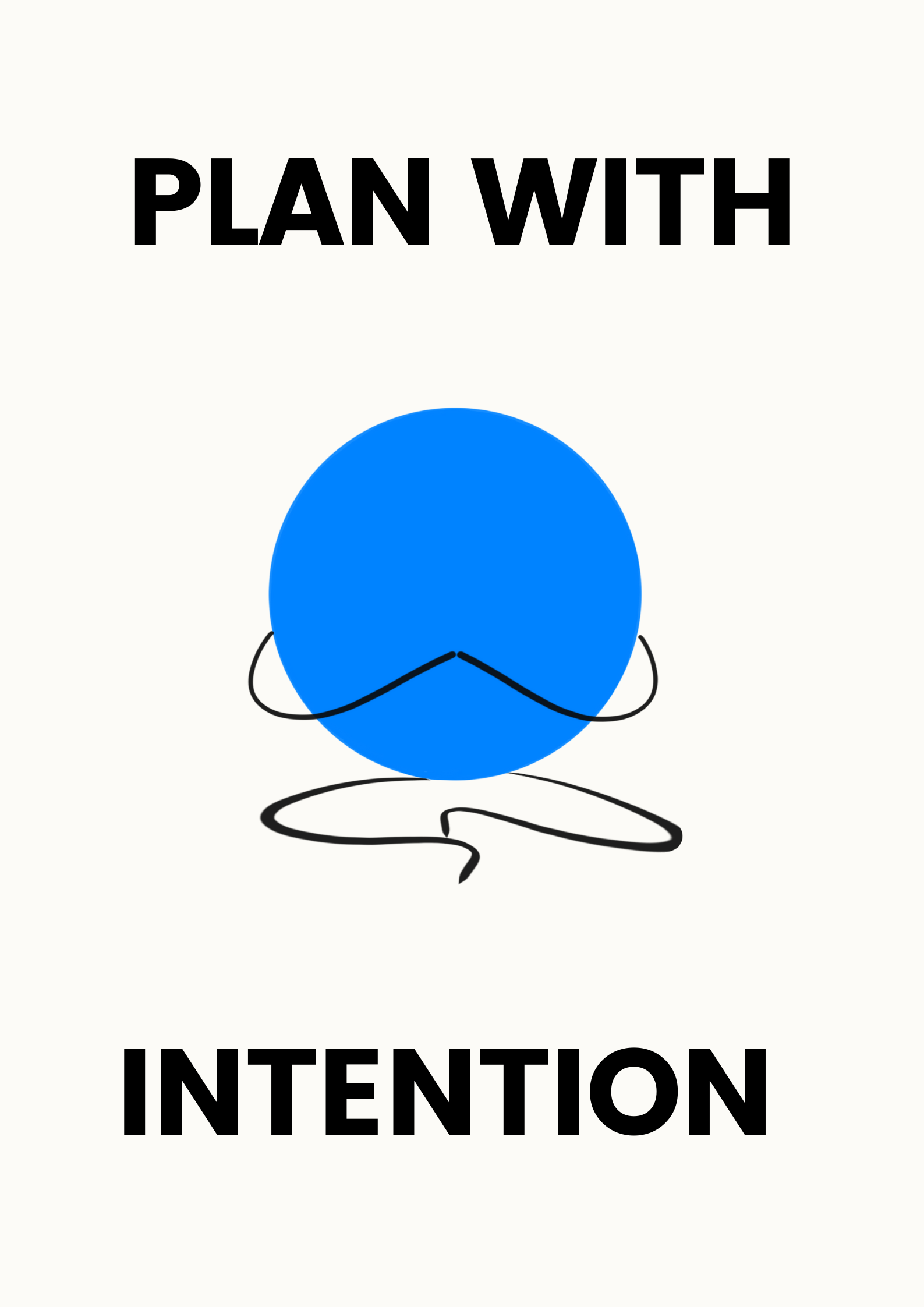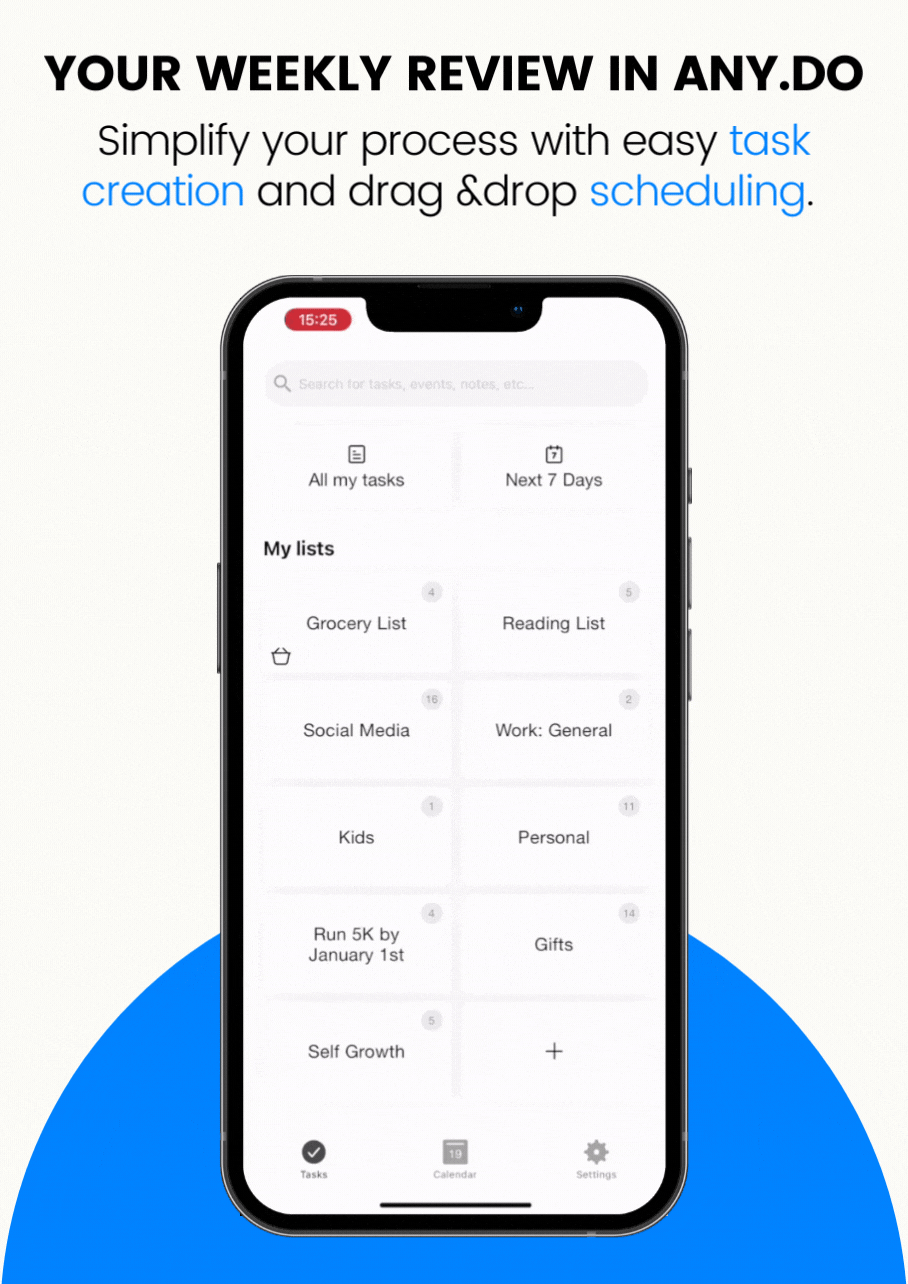When was the last time you took a moment to truly reflect on your actions?
Whether it be work engagements, personal obligations or just general commitments you’ve made to yourself or others – our days are full of action. At times, we are so busy doing, that we simply lose track of all that has been done.
While it might look redundant or even a waste of time to take a moment to look back and reflect on how things have been going so far, a short reflection might be the one thing that will elevate your productivity to the next level.
The weekly review, as the name suggests, is about reviewing your previous week and planning for the next one in order to organize your workflow, get aligned with your goals, and ensure that every item on your todo list is right on track.
The practice is rooted in David Allen’s Getting Things Done (GTD) methodology and has proved to be really helpful to millions worldwide. The best thing? It only takes about 30-minutes to complete and will completely change the way you approach task-management.
What is a Weekly Review?
The weekly review is an opportunity to plan with intention so that nothing slips through the cracks. In his book Getting Things Done: The Art of Stress-Free Productivity, Allen describes the weekly review as “The time to Gather and process all your stuff. Review your system. Update your lists. Get clean, clear, current, and complete.”
Accordingly, the process of a weekly review can be broken down into three sections:
– Get Clear: Reflect on the past week and tie all loose ends.
– Get Current: Decide what needs to be done this week.
– Get Creative: Plan for the future and come up with new ideas to improve your life and work.
At first, it might take an hour, but the impact of this one hour goes way beyond the coming week and the one after that. The review offers you a chance to align your efforts with your goals. According to Allen, the goal of the weekly review is to provide an answer to three questions:
– What went well this week?
– What didn’t go well or what I could have done better?
– Where should be the focus of the coming week?
In other words, a weekly review is an effort to work in the right direction and gain a greater sense of control so you are never caught off-guard with a task that slipped through the cracks.
The Importance of a Weekly Review
A weekly review changes the way you approach your tasks throughout the week. It allows you to take the time to consider your actions and see the bigger picture of how each action aligns with your goals. With a broader view, each task isn’t just a task to be accomplished but rather a step towards a bigger purpose.
When you perform the weekly review, you can determine what worked and should be done more often and what didn’t work and should be avoided or modified in the future. The biggest advantage of a practice like this is that you get to learn more about your own method and patterns, offering the opportunity to adapt the way you do things accordingly.
The benefits of a Weekly Review
The weekly review is an opportunity for self-reflection and decision making. What makes it so useful? Here are our top reasons:
Gain clarity and an objective view of the week
Taking the time to reflect on your goals allows you to gain clarity be realigning your focus, whether work-related or personal.
This overview of the week allows you to take a step back and check on your previous as well as assess the upcoming week as a whole. Rather than listing down to-dos mindlessly, you also get to plan with a goal in mind and prioritize what needs to be done on a priority basis.
The weekly review forces you to pause and reflect and ask the question:
– What did I achieve this week versus what I had initially planned?
– What hurdles, both internal and external, caused me to lose productivity?
– What made this week productive as compared to the last one?
By checking what went wrong and what went right, you are able to observe a few consistent patterns in your routine – something that can help fix or find a way to navigate around certain issues in your workflow.
For example, you may find that daily 11:00 am meetings derail your workday and force you to lose early productivity hours which would be otherwise utilized to make progress on important projects. A possible solution that arises from such an issue, will be to talk to your team and change meetings time to later in the day.
Get Proactive and Stay in Control
When you evaluate your progress each week, you’ll notice right away whether or not you’ve been headed in the proper direction. The review puts you in the driver’s seat, where you aren’t just listing down goals and ideas, but actually planning proactively for the next week based on your progress from the previous one – keeping things realistic and achievable.
In other words, the weekly review is not only a retrospective but also prospective. There is a strategy involved in making this review different from your average to-do list. When you are planning for the week in advance, you are able to start each day with a goal in mind and make actual progress by the end.
It should be kept in mind that planning proactively doesn’t mean planning every minor detail of the day or week. It only means having your priorities loud and clear for the upcoming period.
Say you’re planning to take an exam within a few months, but can’t seem to find the time to study. In this scenario, the weekly review will allow you to be proactive instead of reactive and find time for things beyond your immediate to-do list. This means investing time in learning a new skill while still having the time to prepare for your exam.
Improve on the Go and Learn from Your Mistakes
The weekly review focuses on improvement and contemplation. As you continue to practice it each week, you will be able to see patterns emerge. These patterns will allow you to cater to your strengths and weaknesses, by understanding the consequence of each action. As such, you will automatically become more deliberate with your efforts and more considerate of your time.
For example, if you’re having trouble keeping up with your task load, during the review you may realize that the workload is far beyond your capacity. Once you see this pattern, you can ask for help or delegate some of your work to meet the deadline on time.
The weekly review allows you to recognize these concerns which would otherwise go unnoticed and change your goals or behavior, or the way you approach your tasks.
Creating a Weekly Review
Taking inspiration from Allen’s Weekly Review method, let’s take a look at how you can complete a weekly review. The practice is useful for all and can be used in combination with other productivity methods like the action method, Eat the frog, and so on.
You don’t have to be a professional to find it useful, anyone including students, athletes, entrepreneurs, and even homemakers can utilize the method to make the most out of their time.
Step by Step Guide to Creating a Weekly Review
There’s no one-size-fits-all method to do a weekly review. However, we can offer a simple way for you to start your journey into this method, which you can customize later on according to your commitments and priorities.
Let’s take a look at how to create a weekly review.
Pick a time and place to perform your weekly review
As simple as this may sound, picking a time and place is essential to sticking to your weekly schedule. Motivation is important, but consistency will keep you on track. Do your weekly review at the same time on the same day every week to turn the task into a habit. Once the habit is rooted, you’ll be doing the review every week without fail.
As far as the time and place are concerned, it does not matter which day of the week, as long as it is the most logical for you and your schedule.
Choose a time that you know will be available each week and hold yourself accountable for performing your weekly review, with no excuses. The place is just as important. Choose a place that is guaranteed to offer you some solitude.
You can schedule your weekly review:
At the end of the workweek: If your weekly review is catered towards professional goals then Friday, 3:00 pm seems like a natural choice. It is the end of the workweek and as the week is about to end, it is the perfect time to review the previous week and plan for the coming one. This will allow you to end the week on a productive note and you can head into the weekend confident that everything is organized and accounted for.
On the weekend: Sunday morning or night seems like the perfect time to plan for the upcoming week. The week is officially over and you can now review and plan for the upcoming week. Make use of your off day to reflect on what went well and what went wrong and plan for the brand-new week. Knowing you’ll hit the ground running is a great way to feel excited about Monday.
Start of the week: Monday is the official start to the workweek, and before you enter the grind of the upcoming week. Schedule 30-minutes every Monday morning to do the weekly review. This will allow you to ease into the week and make progress towards your goals.
Your options for scheduling the weekly review are endless. The end goal is to reflect, plan and implement. Make sure that as you do your weekly review, you are mindful of your previous goal(s), whether or not you’ve met this goal and progressed, or if you need to continue working toward it. If you’ve exceeded your goal, it is perhaps time to aspire towards greater objectives. If you failed to meet the goal, then maybe you need to re-evaluate the goal or your strategy.
Create a Checklist
When going through the weekly review, it is important to know what you plan on covering, and how it fits into your upcoming schedule.
Taking an Inventory Checklist
Having a proper checklist will help you measure your progress and stay on track. You can use tools like journals, calendars, or productivity apps to create and track your goals.
Your checklist can include the following items:
– Collect and tie all loose ends like organizing papers, receipts, information, and so on.
– Add all upcoming commitments to your to-do list.
– Add new projects and ideas to the checklist.
The purpose is to be clear and organized about your obligations and responsibilities and listing them down is the first step.
Scheduling Your Checklist
The next step is to schedule the tasks according to priority and importance.
– Review your task list and take inventory of the tasks that need to be scheduled.
– Review past week/s and take inventory of outstanding tasks that require rescheduling or follow-up.
– Review your “waiting for” task list and take note of items that you need to outsource or follow up on.
– Review your “projects” task list to see if you can work on them to make progress towards these goals.
– Review the “personal goals” task list to see if you are working on your personal goals along with work goals.
Creating a Backlog inventory
Backlog inventory is a checklist of the tasks that you want to work on in the future.
– Add tasks here which are important but not urgent enough to be taken on right now.
– Create a task inventory compiling ideas for the future like business ventures, vacation ideas, courses to be taken, skills to learn, books to read, and so on.
Your checklist will help you stay focused on what truly matters for the upcoming week and allow you to better organize your action items for successful completion.
Develop a set of Questions for Your Review
Questions, or rather the right questions, allow you to truly reflect on your actions and see if you are advancing towards a greater picture of your ideal future. As you do your weekly review, you can ask yourself a few questions to make sure that you are making the most of your review.
While you create your checklist and do the review, make sure you take note of any unrelated tasks that have been consuming your time. Understanding how you spend your time and how you can be more proactive instead is key to successfully doing the weekly review.
Here are some questions you can ask to assess the quality and reliability of the list:
– Does this list provide an accurate assessment of the past week?
– Does this list let me evaluate my progress realistically?
– Does this list help me successfully plan for the week ahead?
– Does this list allow me to stay creative and spontaneous?
Once you have organized your future tasks, these questions will help guide you and allow you to paint a broader picture of the upcoming week.
– Am I satisfied with what I accomplished this week?
– What enabled me to reach my goals?
– Is there anything I could have done to be more efficient?
– How can I improve in the future?
– Do my actions align with my long-term goals?
– What hurdles did I face and how can I improve upon them?
Answering these questions helps you make the best of your weekly review. Create a template based on your priorities. Once you have a template ready for you to fill out each week, the process will become seamless.
Your Weekly Review Checklist Template
New to the Weekly Review? This template will help you get accustomed to this new routine, allowing you to build upon it as needed.
Step 1: To-do inventory
– Take note of all that you need to do.
– Clean your inbox, send out pending emails, and so on.
Step 2: Review
– List down the highlights of the week: What did you achieve this week? What went wrong last week?
– List down the hurdles you faced: This includes both internal and external hurdles like long meetings, lack of motivation, low energy, less time, and so on.
Step 3: Gain Insight
– List your insights: How can you improve your work?
Step 4: Plan
– Schedule for the week: What do you need to do next week?
– List items in their order of importance and priority to keep things simple.
Want to simplify this process? Try going through these steps with Any.do!
Using the Weekly Review Template With Any.do
Step 1: Create a To Do list
No matter where you’re going through your weekly review, Any.do’s multi-platform support allows you to manage your items from various devices. Once you pick your preferred platform, simply create a designated to do list for all the items you plan to work on this week.
Step 2: Review
Take note of all of the action items you’ve processed through the week. Use the Completed Tasks folder to check on the items which were successfully completed throughout the week and use the sort and tags filters to check up on any remaining action items you’re yet to complete.
Step 3: Gain Insight
After examining the items you’ve worked on so far, make sure to add notes about your progress in order to enhance your workflow and learn how to improve. If needed, break down your tasks into smaller steps by adding subtasks to help manage your workload better.
Step 4: Plan
After gaining some insight, start adding reminders to the tasks you’re looking to work on in the upcoming week. Whatever’s on your backlog list can be moved to the
Someday section of your Task View, to avoid distracting you while you work. You can even use the color tags to better define your priorities to enhance your workflow.
By applying these few simple steps, your weekly review will take no longer than 30 minute, creating a semi-automated process for you to easily go through each week.
Conclusion
No matter what our intentions might be, a week rarely turns out how we imagined it. But that’s ok. The weekly review is not about committing to a specific outcome. It is about practicing conscious intention, while becoming more aware of your productivity and thought process. It’s a way to ensure you are working in the right direction, while readjusting and modifying your actions as you go along.
By taking as little as 30 minutes a week, you can become more focused, better organized and gain much needed insight into the way you do things. Try it out this week to see what kind of impact it can have on your life!









